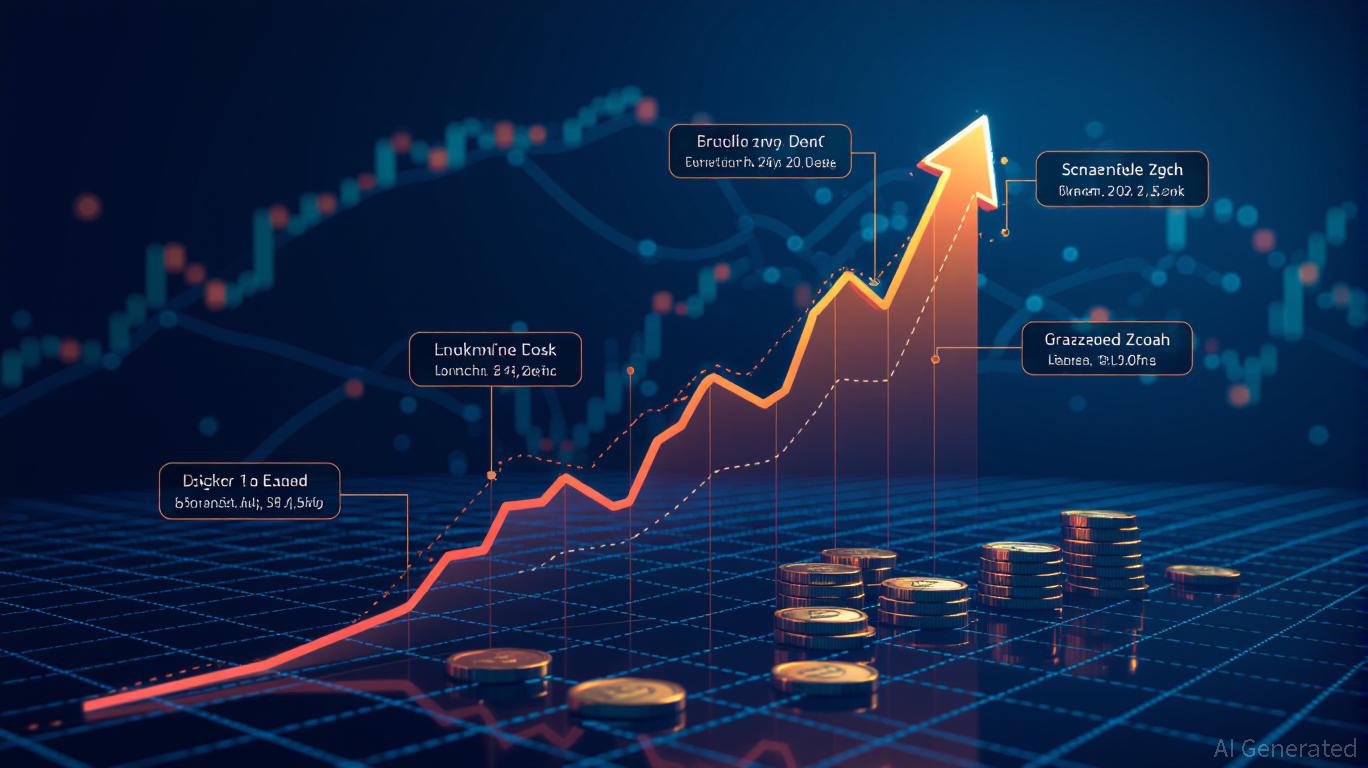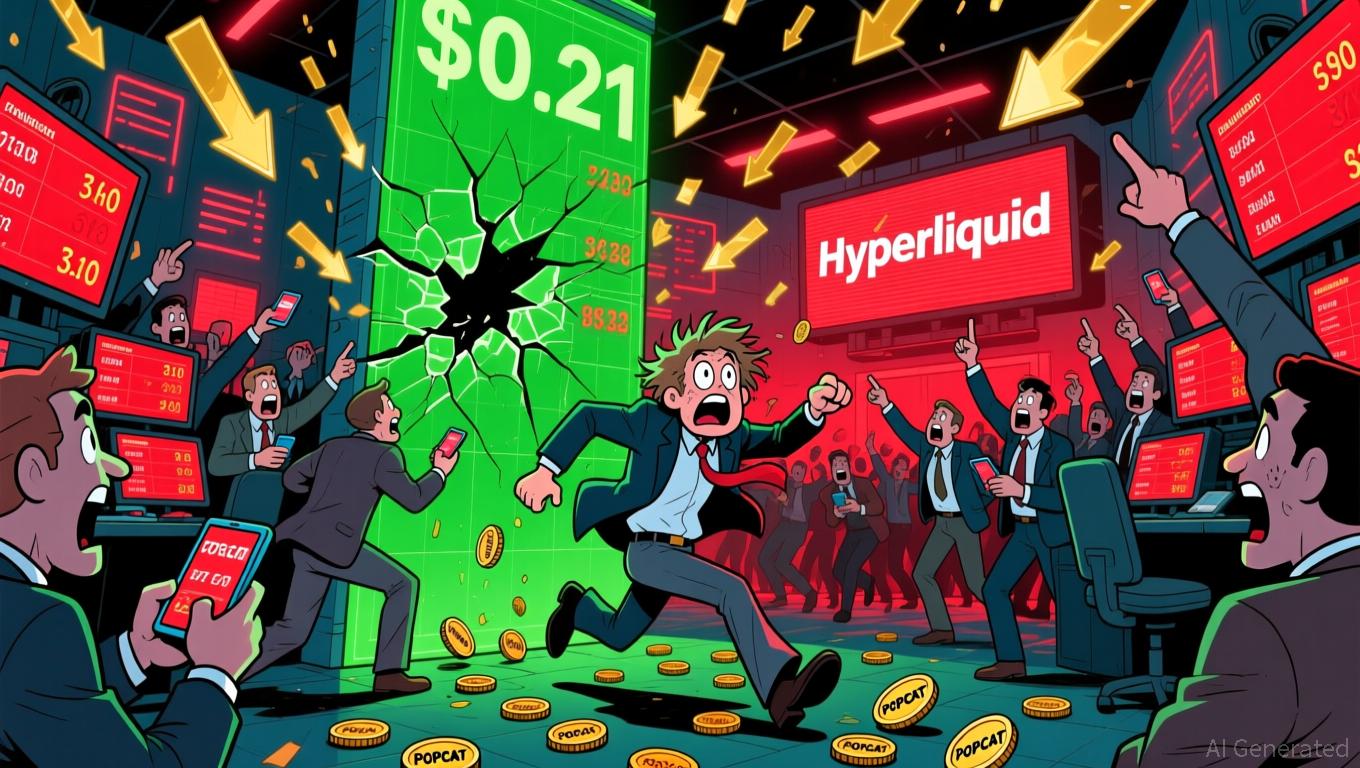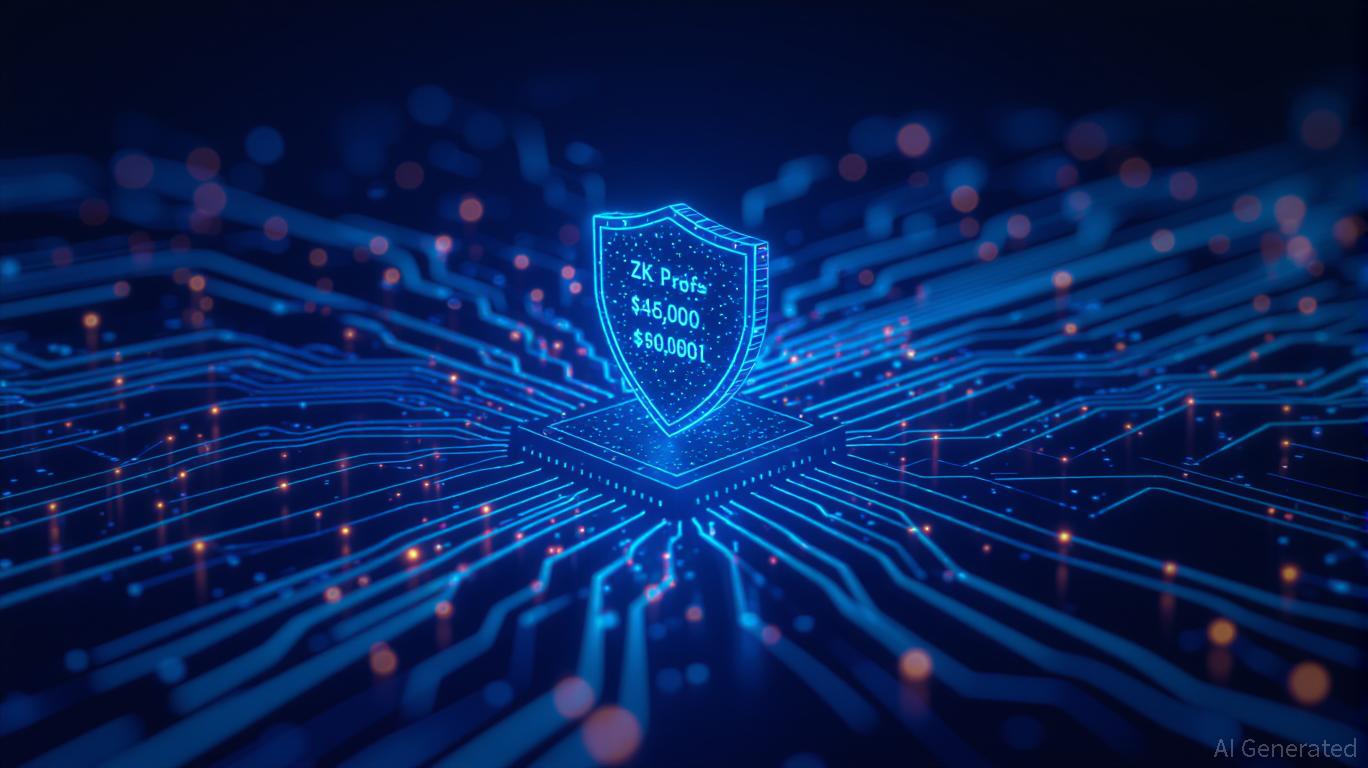Zcash Halving and Its Impact on the Crypto Market: Price Trends After Halving and Shifts in Miner Activity Within an Evolving Market
- Zcash's 2024 halving reduced block rewards by 50%, reinforcing its deflationary model and reshaping miner incentives. - Post-halving price surged 92% in Q4 2025, driven by speculative demand and Grayscale's $137M institutional trust. - Transition to proof-of-stake stabilized the network, lowering barriers for validators and reducing energy costs. - Experts project ZEC could reach $750 if privacy adoption grows, but risks include regulatory scrutiny and miner selling pressure. - Zcash's unique blend of sc
Post-Halving Price Trends: Deflationary
Momentum
and Institutional Influence
As highlighted in a
Zcash stands out due to its privacy features—shielded transactions now make up 28% of its total supply, as reported by Bitget. These privacy capabilities, supported by accessible tools like the Zashi mobile wallet, have cultivated a dedicated user community. FXStreet points out that this utility-based demand works alongside speculative interest, creating two main drivers for price growth, as mentioned in the Bitget report.

Miner Adaptation: Shift to Proof-of-Stake and Network Resilience
The 2024 halving coincided with Zcash’s migration from proof-of-work (PoW) to proof-of-stake (PoS), fundamentally changing the economics for miners, according to a
Miner earnings also underwent a shift. With block rewards slashed, PoW miners saw their profits decrease, prompting a faster transition to PoS validation, as noted in the Bitget analysis. This change has made network participation more accessible, lowering the bar for smaller investors and lessening dependence on large mining operations, according to the Bitget analysis. The next halving, set for 2028, will further decrease block rewards to 0.78125 ZEC and is expected to reinforce these patterns, as stated in the Bitget analysis.
Expert Perspectives: Navigating Optimism and Uncertainty
Market experts remain cautiously positive. Bitget forecasts that ZEC could break above $500, with potential targets of $580 or even $750 if the adoption of shielded transactions continues, as outlined in the Bitget report. Nevertheless, there are ongoing risks. Regulatory ambiguity around privacy coins, price volatility, and the possibility of miners selling due to reduced rewards could all limit growth, according to the Bitget report. Additionally, Zcash’s negative correlation with Bitcoin, observed in late 2025, underscores its value as a diversification tool in crypto portfolios, as noted in the Bitget report.
Conclusion: A Strategic Player in an Evolving Crypto Ecosystem
The path Zcash has taken since the halving highlights its transformation from a specialized privacy coin to a key asset in the expanding crypto landscape. The combination of a deflationary supply model, growing institutional interest, and the stability brought by PoS positions ZEC as both a long-term value store and a utility-focused platform. Despite ongoing challenges, the 2024 halving has sparked a broader narrative: in a time of regulatory challenges and market segmentation, Zcash’s unique mix of scarcity and privacy could become increasingly appealing to investors seeking diversification.
Disclaimer: The content of this article solely reflects the author's opinion and does not represent the platform in any capacity. This article is not intended to serve as a reference for making investment decisions.
You may also like
Hyperliquid News Update: Significant Leverage, Limited Liquidity: POPCAT's $5 Million DeFi Breach
- Hyperliquid suffered a $4.9M loss after a trader manipulated Solana-based memecoin POPCAT through leveraged long positions and a sudden price crash. - The attacker used $3M in USDC from OKX to create a $20–30M leveraged position, inflating POPCAT’s price before triggering cascading liquidations. - Hyperliquid paused its Arbitrum bridge to stabilize the platform, highlighting vulnerabilities in DeFi’s automated liquidation systems and low-liquidity markets. - Experts warn such attacks expose DeFi risks, u

Vitalik Buterin's Advances in Zero-Knowledge Technology and the Prospects for Blockchain Scalability: An Investment Outlook for 2025
- Vitalik Buterin's GKR protocol breakthrough reduces ZK verification costs by 10-15x, enabling 43,000 TPS on ZKsync with near-zero fees. - ZK Layer 2 market grows at 60.7% CAGR to $90B by 2031, driven by Ethereum's "Lean Ethereum" optimizations and institutional adoption. - ZKsync, StarkNet, and Immutable lead DeFi/gaming expansion, but face regulatory risks (Zcash scrutiny) and technical barriers to mass adoption. - Investors must balance ZK's scalability potential with execution risks, regulatory uncert

Vitalik Buterin Supports ZKsync and the Advancement of Scalable Blockchain Technology
- Vitalik Buterin endorsed ZKsync's Atlas upgrade, boosting its market profile as Ethereum's scalability solution. - ZKsync now achieves 15,000 TPS, 1-second finality, and real-time Ethereum liquidity access, outperforming Layer-2 rivals. - The ZK token surged 50% post-endorsement, with growing institutional adoption and RWA integration as key drivers. - ZKsync's zero-knowledge proofs and decentralized governance model position it as a leader in secure, scalable blockchain infrastructure.

Bitcoin News Update: Clearer Regulations and Growing Institutional Interest Propel Crypto Market to $2.4 Trillion as Industry Evolves
- U.S. crypto market surges to $2.4T as institutional adoption, regulatory clarity, and macro optimism drive gains. - Bitcoin and Ethereum rebound post-government shutdown, with crypto-linked stocks like SBET and GLXY rising 3-5% pre-market. - Regulatory frameworks like CLARITY Act and Project Crypto aim to resolve ambiguity, boosting institutional confidence. - Analysts caution volatility risks despite ETF inflows and blockchain adoption milestones, urging diversified long-term strategies.